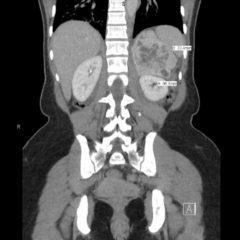Thyroid Storm
ABSTRACT:
Audience:
This simulation is designed to educate emergency medicine residents and medical students on the recognition and management for thyroid storm.
Introduction:
Hyperthyroidism is a condition in which the thyroid gland produces too much thyroid hormone. This can usually be controlled with medications; however, 1%-2% of patients will develop thyroid storm, which is a life-threatening condition. If not treated emergently, thyroid storm can lead to end-organ damage and cardiovascular collapse.1 Thyroid storm has a nonspecific presentation with signs and symptoms including hyperpyrexia, tachycardia, central nervous system (CNS) dysfunction, and gastrointestinal (GI) manifestations; all of these mimic many other more common emergency department (ED) presentations.2 Therefore, it is important for medical providers to recognize associated symptoms, have a high suspicion for the diagnosis based on patient presentation, and quickly provide necessary treatment to stabilize the patient.
Educational Objectives:
By the end of this simulation session, the learner will be able to: 1) understand the essential physical exam components necessary to evaluate for etiologies of acute encephalopathy, 2) review laboratory and imaging studies to obtain for evaluation of acute encephalopathy and/or suspected thyroid storm, as well as the rationale behind ordering each study, 3) identify underlying etiologies or pathologies for developing thyroid storm, 4) discuss treatment for thyroid storm.
Educational Methods:
This session is conducted using high-fidelity simulation, followed by a debriefing session on evaluation for and treatment of thyroid storm. However, it could also be run as an oral boards case.
Research Methods:
Our residents are provided a survey at the completion of the debriefing session so they may rate different aspects of the simulation, as well as provide qualitative feedback on the scenario.
Results:
Feedback was largely positive, with a potential broad differential and specific treatment regimen cited as beneficial to review. The residents voiced appreciation at seeing a photograph of the patient’s face at the beginning of the case, as the ophthalmopathy was difficult to reproduce on the mannequin.
Discussion:
This is a cost-effective method for reviewing thyroid storm. Learners had a wide range of narrow versus broad differentials, as well as comfort level with treatment. Having the pharmacist unavailable to answer their questions caused them to rely on alternative sources of knowledge, typically, their cell phones. Our main take-away is to continue providing visual stimuli to enhance a physical exam in order to bolster psychological buy-in.
Topics:
Medical simulation, endocrine emergencies, thyroid disorders, thyroid storm, hyperthyroidism.

